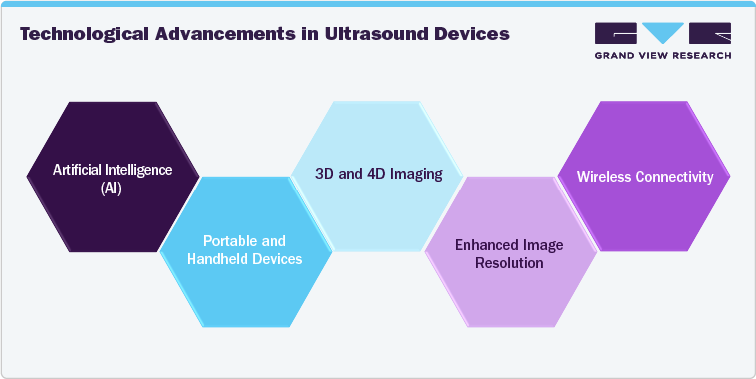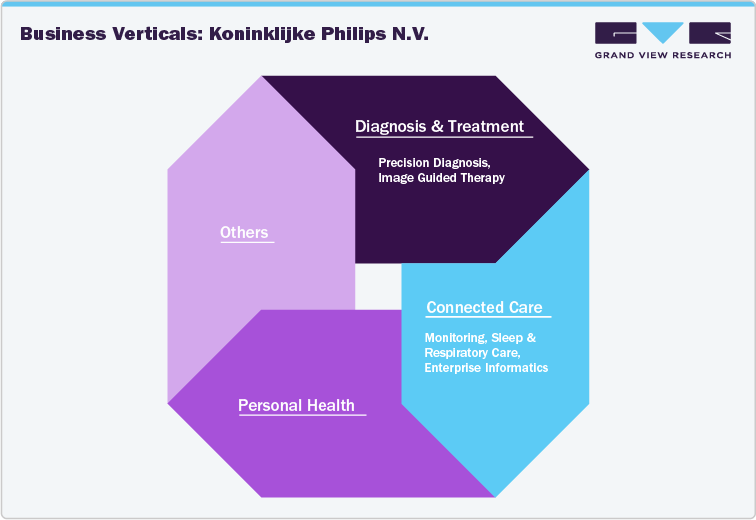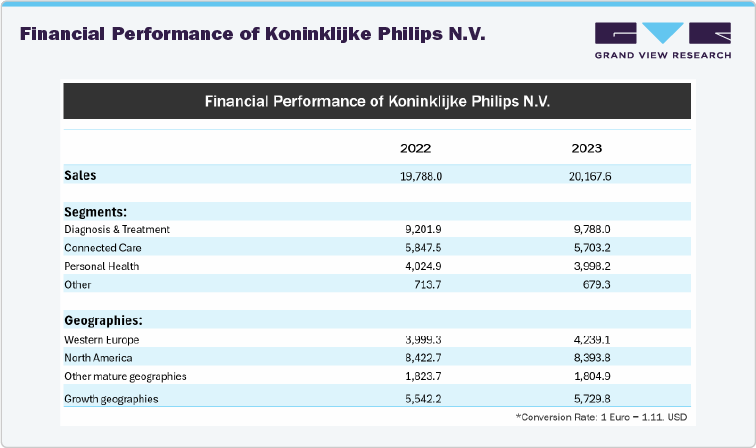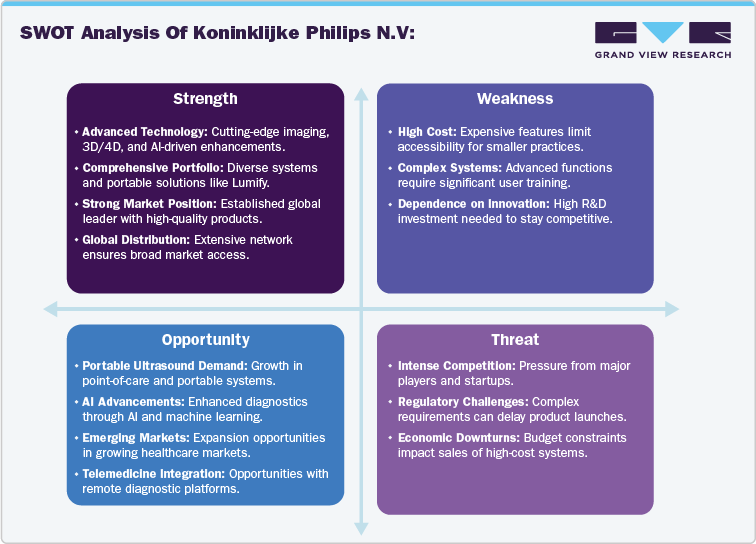- Home
- »
- Market Trend Reports
- »
-
Ultrasound Devices Market: Competitive Landscape Overview And Future Outlook
![Ultrasound Devices Market: Competitive Landscape Overview And Future OutlookReport]()
Ultrasound Devices Market: Competitive Landscape Overview And Future Outlook
- Published: Sep, 2024
- Report ID: GVR-MT-100248
- Format: PDF, Horizon Databook
- No. of Pages/Datapoints: 70
- Report Coverage: 2024 - 2030
Overview Of The Ultrasound Devices Industry
The ultrasound industry within the medical imaging field is growing rapidly owing to technological advancements and a growing demand for non-invasive diagnostic methods. Ultrasound is known to be an efficient technique due to its safety, low cost, and ability to provide real-time images, making it useful in many areas of medicine, such as obstetrics, cardiology, radiology, and musculoskeletal imaging. Recent innovations, like portable and handheld ultrasound devices, 3D/4D imaging, and the integration with artificial intelligence, have expanded its applications, making ultrasound readily available in clinics and even in remote areas.
Key Innovations Transforming The Ultrasound Devices Industry:
The ultrasound devices industry is undergoing various key advancements that are revolutionizing the field of medical imaging. These innovations are enhancing the accuracy, efficiency, and versatility of ultrasound technology, making it an indispensable tool in modern healthcare. From improved image resolution to the integration of artificial intelligence, the latest developments are setting new standards in patient care and diagnostic precision.

Some of the most notable advancements include:
Artificial Intelligence (AI): AI is progressively being incorporated into ultrasound devices to improve their diagnostic accuracy and operational performance. AI algorithms are engineered to analyze ultrasound images with exceptional precision, automating the detection and measurement of anatomical features and abnormalities. This integration enables real-time interpretation of images, significantly minimizing diagnostic errors and accelerating analysis. Additionally, AI systems enhance image processing through techniques such as image enhancement and artifact reduction, resulting in clearer and more accurate visual representations.
-
Several companies are leading the integration of artificial intelligence (AI) into ultrasound devices, driving notable advancements in the field. GE Healthcare has made significant progress with its Logiq E10 and Versana ultrasound systems, which feature AI-driven enhancements for improved imaging and diagnostic support.
Portable and Handheld Devices: The development of compact, handheld ultrasound devices has transformed the accessibility and versatility of ultrasound imaging. These portable systems enable real-time imaging across various environments, such as emergency care, remote locations, and point-of-care settings, thereby expanding the range of ultrasound applications.
-
Several companies are pioneering the development of portable and handheld ultrasound devices, redefining mobility and functionality. Notable examples include Butterfly Network with its Butterfly iQ, Philips with its Lumify, GE Healthcare with the Vscan Air, and Clarius Mobile Health with the Clarius HD series.
3D and 4D Imaging: Advancements in 3D and 4D imaging techniques deliver detailed visualizations of anatomical structures. These modalities offer dynamic, volumetric views that are especially useful for evaluating complex conditions, tracking fetal development, and guiding surgical procedures with improved spatial context.
-
Top companies in 3D and 4D ultrasound devices are GE Healthcare with its Voluson series, Philips with the EPIQ and Affiniti systems, Siemens Healthineers with the Acuson series, and Canon Medical Systems with the Aplio series.
Enhanced Image Resolution: Improvements in transducer technology and digital signal processing have significantly enhanced image resolution, offering clinicians high-definition, detailed views of anatomical structures. This advancement allows for more precise visualization of tissues and organs, leading to more accurate diagnoses and better-informed clinical decisions.
Wireless Connectivity: The integration of wireless technology in ultrasound devices enables smooth data transfer and remote access to imaging results. This connectivity supports telemedicine, increases collaboration among healthcare professionals, and streamlines patient management by allowing real-time data sharing and remote consultations.
Competitive Scenario Of The Ultrasound Devices Industry
The ultrasound devices industry is highly competitive, fueled by rapid technological advancements and growing demand for innovative imaging solutions. Major companies like GE Healthcare, Philips, Siemens Healthineers, and Canon Medical Systems are advancing their technologies, including 3D and 4D imaging, AI integration, and portable systems. These leading players are engaged in offering advanced features, high-quality images, and improved diagnostic capabilities, to hold a significant market share in the industry.
Furthermore, new companies and startups are introducing advanced technologies and approaches, intensifying the competition. Key factors influencing the competitive landscape include product differentiation, technological innovation, pricing strategies, and customer support. The industry is marked by continuous research and development, strategic partnerships, and mergers and acquisitions, which contribute to a dynamic and evolving market.
The report analyses the competitive landscape in this industry based on parameters mentioned below:
Competitive Landscape: Top 10 Ultrasound Devices Manufacturers Overview
Market Outlook
Company Categorization
Company Share Analysis (Top 9 companies)
Company Position Analysis
List of Key Companies by Region
Company Overview
Product Benchmarking
Financial Performance
Recent Strategic Initiatives
SWOT Analysis
Emerging Players: Overview of 80+ Emerging Players and Startups in the Ultrasound Industry
Company Overview
Establishment Year
Headquarters
Business Verticals
Employee Count
Investor Information
Total Funding (USD)
Product Benchmarking
Strategic Initiatives
SWOT Analysis
Company Profiles:
Koninklijke Philips N.V.
Establishment Year: 1891
Headquarters: Amsterdam, Netherlands
Number of Employees: 70,000
Koninklijke Philips N.V. is a leading global company in healthcare technology, renowned for its extensive portfolio of advanced medical solutions. Philips focuses on improving patient outcomes through innovative technologies across its three primary divisions: Personal Health, Integrated Care, and Diagnostics. The company offers a broad range of medical imaging technologies, including X-ray, CT, MRI, and ultrasound, all designed to enhance diagnostic accuracy and clinical efficiency. Philips is committed to expanding its role as an ambulatory care provider, delivering high-quality, integrated solutions that support optimal patient care and streamline healthcare delivery across various settings.

Product Portfolio of Koninklijke Philips N.V.
Product Name
Description
Affiniti 30
The system addresses the need to scan quickly and send data efficiently on a daily basis
Affiniti 70
Affiniti 50
ClearVue 550
The active array technology provides image quality that boosts diagnostic confidence
ClearVue 350
ClearVue 650
The system provides excellent quality 2D imaging and 3D/4D imaging
ClearVue 850
The system provides powerful imaging capabilities for breast elastography and enables highly sensitive strain elastography
EPIQ Elite
An ultrasound system with high-quality image processing software & advanced transducer technology, designed for obstetrics and gynecology care
EPIQ CVx
It is an exclusive cardiac ultrasound device with advanced functionality
InnoSight
A compact and portable system of 2.5 kg offers enhanced mobility
Lumify
Lumify is a handheld portable ultrasound device, which provides high-resolution images with crystal-clear insights
Sparq
Trolley-based ultrasound system intended for Point of Care (POC) applications
5300 series
Compact Ultrasound System 5000 series can be used for various applications such as general imaging, point-of-care, and obstetrics & gynecology,
CX 50
The features include PureWave, Wireless & wired DICOM, QLAB quantification software, and Portable ultrasound

Strategic Initiatives
Companies drive growth through a blend of strategies, including significant investments in innovation and research to develop new products and technologies. They expand their market presence by entering new regions and targeting diverse customer segments, while strategic partnerships and acquisitions enhance their capabilities and competitive edge. Additionally, a strong focus on customer-centric approaches ensures exceptional experiences, fostering loyalty and driving long-term success.
Recent Developments By Koninklijke Philips N.V.:
-
In June 2024, Philips introduced its next-generation AI-enabled cardiovascular ultrasound platform, designed to accelerate cardiac ultrasound analysis using advanced AI technology and alleviate the workload in echocardiography labs. Integrated into the company’s EPIQ CVx and Affiniti CVx ultrasound systems, these new FDA 510(k) cleared AI applications mark a significant advancement in Philips' cardiovascular imaging and diagnostic solutions. They automate measurements and streamline workflows, thereby enhancing productivity and efficiency in cardiovascular care.
-
In October 2022, Philips introduced a new, compact ultrasound system 5000 Series at RSNA 2022, which would enable first-time-right diagnosis for patients. The system provides high image quality essential to support a reliable and confident diagnosis in a small, portable unit.
-
In March 2022, Phillips launched an Ultrasound Workspace at the American College of Cardiology’s Annual Scientific Session & Expo (ACC 2022). This echocardiography system would help improve consistency and productivity while also enhancing diagnostic accuracy.

Emerging Players In Ultrasound Devices
Emerging players in the ultrasound devices market are making notable advances through innovative technologies and distinct strategies to establish a strong market presence. Here are some companies and their approaches.
-
Butterfly Network: This is known for its Butterfly iQ a pioneering handheld ultrasound device featuring a single, portable probe equipped with advanced semiconductor technology, replacing traditional piezoelectric crystals. This innovation makes the device more affordable and versatile. By connecting the device to a mobile app, Butterfly Network enhances access to high-quality imaging, making it adaptable for various healthcare environments, from primary care to emergency settings.
-
Clarius Mobile Health: Clarius Mobile Health provides the Clarius HD series, a lineup of wireless handheld ultrasound devices known for their high-definition imaging. These devices connect to mobile devices through a dedicated app, facilitating easy operation. Clarius is dedicated to offering accessible, high-quality imaging across various clinical applications. The emphasis on wireless and app-based functionality meets healthcare demands, highlighting portability and flexibility.
-
EchoNous: EchoNous' Kareo merges ultrasound imaging with artificial intelligence (AI) to enhance diagnostic support. This device simplifies the imaging process and incorporates real-time AI-driven analysis to boost accuracy. EchoNous focuses on streamlining imaging and providing clinicians with AI-enhanced insights, aiming to improve diagnostic speed and precision, particularly in critical or high-pressure scenarios.
The "Ultrasound Devices Market: Competitive Landscape Overview and Future Outlook" trend report provides a comprehensive analysis of the competitive dynamics within the global ultrasound devices market, offering insights from 2018 to 2030. This detailed report evaluates the key players, emerging trends, and technological innovations shaping the ultrasound market. It also delves into market segmentation by application, portability and end use.
The report further examines the market’s geographical distribution, analyzing regional competitive landscapes in North America, Europe, Asia-Pacific, and other key regions. Additionally, the report features expert analysis on the evolving market strategies, partnerships, and mergers & acquisitions that are influencing the competitive environment. An executive summary provides a snapshot of the market’s current status and future outlook, highlighting the factors driving growth, such as advancements in imaging technology, increasing demand for early diagnosis, and the rising prevalence of chronic diseases. This report serves as a crucial resource for stakeholders seeking to understand the competitive forces and future opportunities in the ultrasound devices market.
Attributes
Details
Report Coverage
Competitive Analysis of 10+ key Ultrasound Devices Manufacturers; 80+ Emerging Players and Startups
Report Study Period
2018 to 2030
Report Representation
PDF
Contents of Report
Market Overview
Company Categorization
- Market Leaders
- Emerging Players
Company Market Share Analysis (Top 10 Players)
Company Market Position Analysis
List of Key Players, by Region
List of Emerging Players/Startups (80+ Players)
Company Profiles (Any 15)
- Company Overview
- Headquarters
- Establishment Year
- Employee Strength
- Company Type/Ownership Information
- Business Verticals
- Product Benchmarking
- Financial Performance (Only for Public Companies)
- Revenue
- Operating Income/Loss
- EBIT/EBITA
- Net Income/Loss
- Strategic Initiatives
- SWOT Analysis
Share this report with your colleague or friend.
GET A FREE SAMPLE
This FREE sample includes market data points, ranging from trend analyses to market estimates & forecasts. See for yourself.
![gvr icn]()
NEED A CUSTOM REPORT?
We can customize every report - free of charge - including purchasing stand-alone sections or country-level reports, as well as offer affordable discounts for start-ups & universities.
Contact us now to get our best pricing.
![esomar icon]()
ESOMAR certified & member
![ISO]()
ISO Certified
We are GDPR and CCPA compliant! Your transaction & personal information is safe and secure. For more details, please read our privacy policy.
We are committed towards customer satisfaction, and quality service.
Client Testimonials

"The quality of research they have done for us has been excellent..."
ISO Certified


